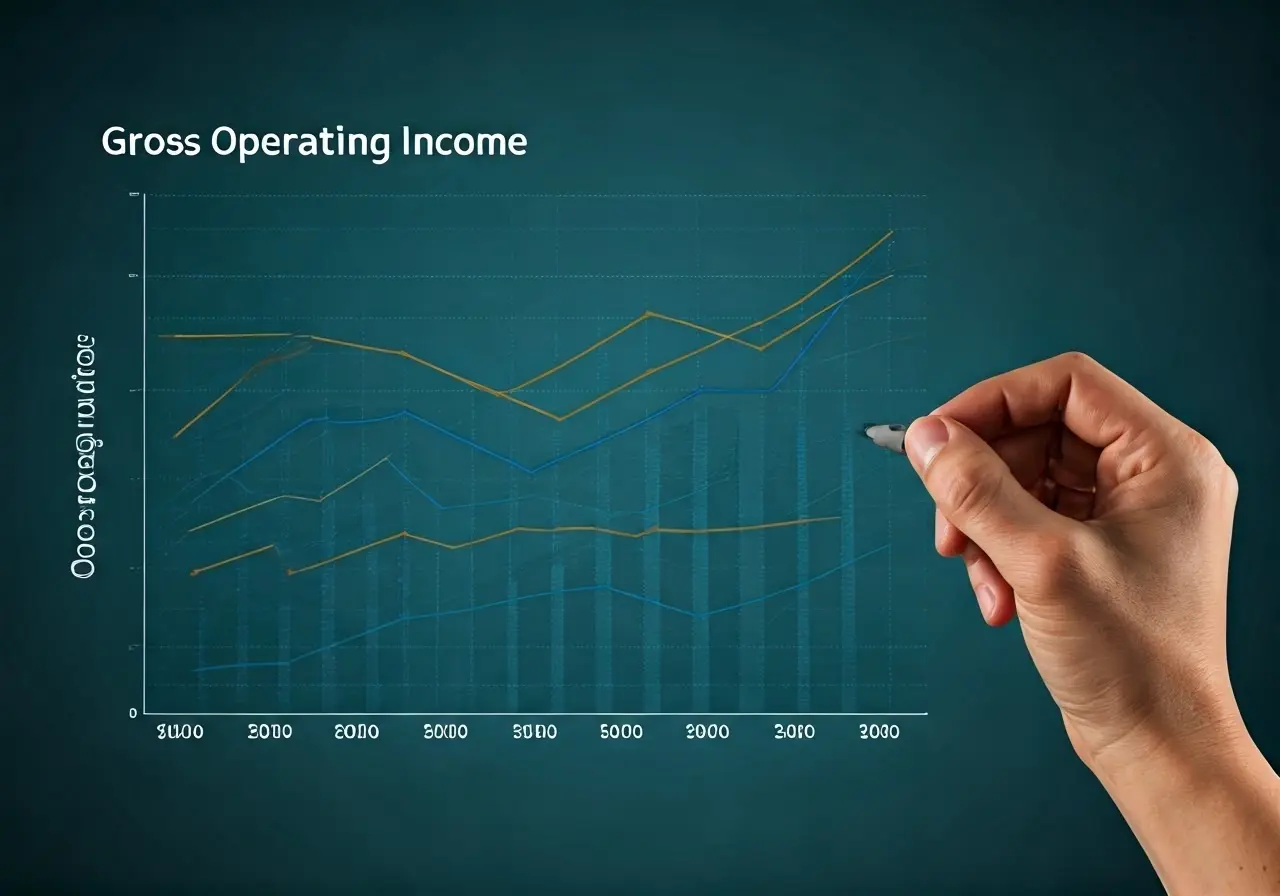Understanding Gross Operating Income (GOI) is crucial for anyone venturing into the world of real estate investment. It’s a significant factor that affects the profitability and valuation of real estate properties. In this post, we’ll break down the concept of GOI, its importance, and how it fits into the larger picture of real estate investing.
Defining Gross Operating Income
Gross Operating Income, often abbreviated as GOI, refers to the total income generated from a property before deducting operating expenses. This includes not only rental income but also other forms of income such as parking fees, vending machines, and more. Understanding this concept is indispensable because it provides a clear picture of a property’s earning potential which is pivotal when estimating the return on investment. In a sense, GOI acts as the overarching umbrella under which all incoming revenue streams are gathered, offering investors an unclouded view before any deductions.
Beyond just the dollars and cents, GOI serves as a barometer for the health of a property investment. It’s an indicator of how well a property is performing in terms of attracting and retaining tenants, something particularly vital in fluctuating market conditions. By focusing on GOI, property owners can spot trends and make informed decisions about necessary changes, whether that’s adjusting rental pricing, investing in property improvements, or exploring new revenue opportunities like offering paid amenities.
How to Calculate GOI
Calculating GOI involves adding up all the potential rental incomes and additional income streams a property can generate, while considering factors like occupancy rates and market demand. Understanding this calculation helps in projecting the financial potential of real estate investments. For instance, if a large portion of your GOI comes from high occupancy, changes in market demand may alter the financial outlook dramatically. This is why keeping a vigilant eye on both current and projected market conditions is crucial for accurate calculations.
To further illustrate, let’s break down a simple calculation: Imagine a property with ten rental units, each generating (1,000 monthly. If all units are occupied, the annual rental income would be )120,000. Additionally, if the property earns (10,000 annually from parking fees and another )5,000 from laundry facilities, the total GOI would be $135,000. Such detailed calculation ensures that no revenue stream is overlooked, thereby providing a comprehensive overview for investors.
It’s interesting to note that using modern property management software can streamline this process. These tools often include analytics to estimate potential vacancies and forecast market trends, further refining GOI calculations. By leveraging data analytics, landlords and property managers can align their strategies with the broader economic environment, thus ensuring a more accurate representation of the property’s earning capacity.
GOI’s Role in Real Estate Valuation
GOI plays a crucial role in determining the value of a property. Real estate investors rely on GOI to assess how much a property could potentially earn, which is vital for setting the right purchase price and estimating returns. For instance, banks and financial institutions often use GOI as part of their criteria when evaluating a property’s loan suitability. They look at it as a measure of financial health—higher GOIs suggest greater financial stability, making it easier to secure favorable loan terms.
Moreover, GOI directly impacts the capitalization rate, or ‘cap rate,’ which is a key determinant in valuing real estate. The cap rate is effectively the return on investment a property can expect, represented as a percentage. A higher GOI often implies a higher cap rate, which can elevate a property’s market value. This metric is especially significant for investors seeking to maximize their returns over time by purchasing low and selling high. It also guides them in making strategic decisions such as refinancing or repositioning assets.
The Impact of GOI on Investment Decisions
A clear understanding of GOI can significantly impact investment decisions. It aids in evaluating the profitability of a property, comparing potential investment opportunities, and guiding strategic planning in real estate portfolios. For instance, if one property boasts a higher GOI than a comparable asset, investors might be more inclined to pursue the former, believing it offers better financial prospects. Furthermore, as GOI is sensitive to market conditions, savvy investors use it to gauge how adaptable a property is to economic shifts, another layer of nuanced decision-making.
In practical terms, focusing on GOI allows investors to craft more effective asset management strategies. By identifying properties with increasing GOI, they can prioritize investments in growing markets or consider repositioning strategies for underperforming assets. This can also mean strategically divesting from properties with diminishing GOI. Essentially, GOI serves as both a compass and a yardstick, helping investors navigate the real estate landscape with confidence and precision.
Common Misconceptions About GOI
There are several misconceptions about GOI, such as confusing it with net income or underestimating the impact of non-rental revenues. Clarifying these misconceptions helps investors better appreciate the nuances of real estate income metrics. One common misunderstanding is assuming that GOI equates to profitability. While closely related, GOI doesn’t account for operating expenses, taxes, or insurance costs, which are subtracted to calculate net operating income (NOI). Overlooking this distinction can lead to misguided assessments of a property’s financial health.
Another prevalent misconception is the belief that only rental income falls under GOI. In reality, supplementary income streams can significantly contribute to a property’s overall financial picture. For example, income from amenities such as parking spaces, shared common areas, or even community events all add up to the GOI. Ignoring these can drastically undervalue a property’s revenue potential. Fully understanding all components of GOI ensures more accurate evaluations, allowing for smarter strategy development and performance benchmarking.
Wrapping Up: The Significance of GOI in Real Estate
Gross Operating Income is a fundamental metric for assessing the potential revenue of a real estate investment. By understanding GOI, investors can make more informed decisions and better plan for expenses and profitability. Remember, mastering the basics like GOI sets the foundation for successful real estate investment.


